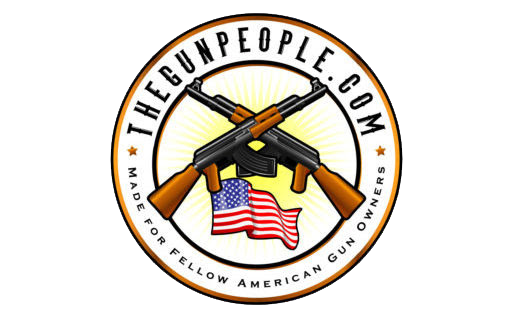Ask any military aviation buff to name the best combat aircraft to see service in the Second World War, and chances are the Vought F4U will make almost everyone’s list. Though arguably not quite as “famous” as the North American P-51 Mustang, the Republic P-47 Thunderbolt, or the Supermarine Spitfire, the Vought F4U Corsair was a highly capable aircraft.
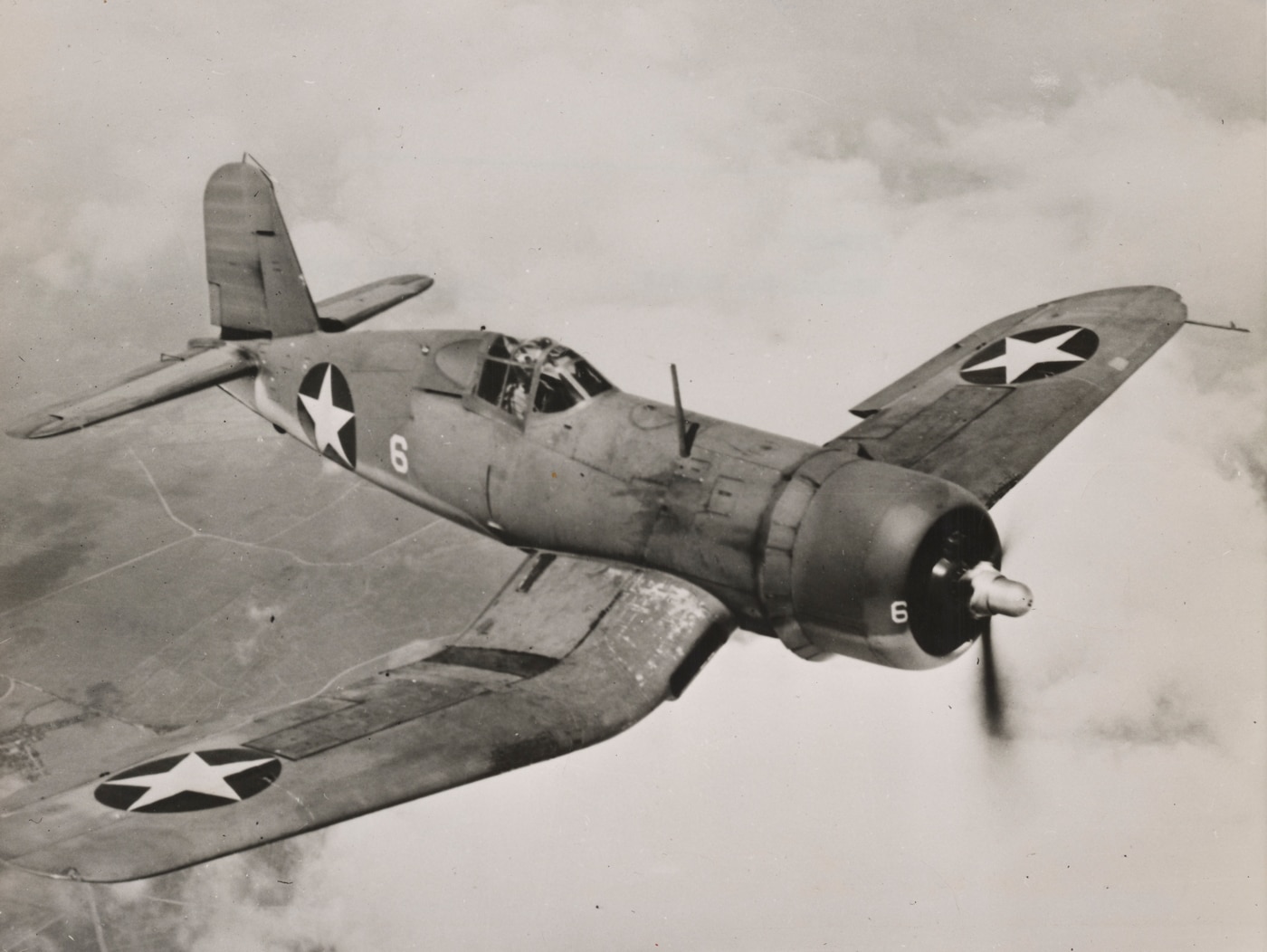
Some have even considered the inverted-gull-winged Corsair — designed by the legendary Rex Beisel and Igor Sikorsky — to be one of the best combat aircraft in history. It proved to be the first U.S. fighter that could outfight the best that Japan had to offer, while it could also outperform other Allied aircraft. It is easy to see why the F4U Corsair also tops most peoples’ lists of the greatest piston-engined fighter ever built.
During its service in the Second World War in the Pacific theater, it was the aircraft that made the United States Navy’s first night-time, radar-guided interception. The Corsair went on to play a significant role in the Battle of Chosin Reservoir and other battles of the Korean War — even as the conflict was noted for ushering in the era of jet fighters. The F4U was also among the very last piston-engine fighters to come off the production line anywhere in the world.
Back-Up To the F6F Hellcat?
There has been the misperception that the F4U was the result of an effort to develop a fighter that could be a back-up to the Grumman F6F Hellcat. In fact, the design work on the Corsair had begun before any considerations for the Hellcat had even taken shape. More importantly, in a number of ways the Corsair was technically ahead of Hellcat — yet, the F4U suffered a number of delays in the early development stage.
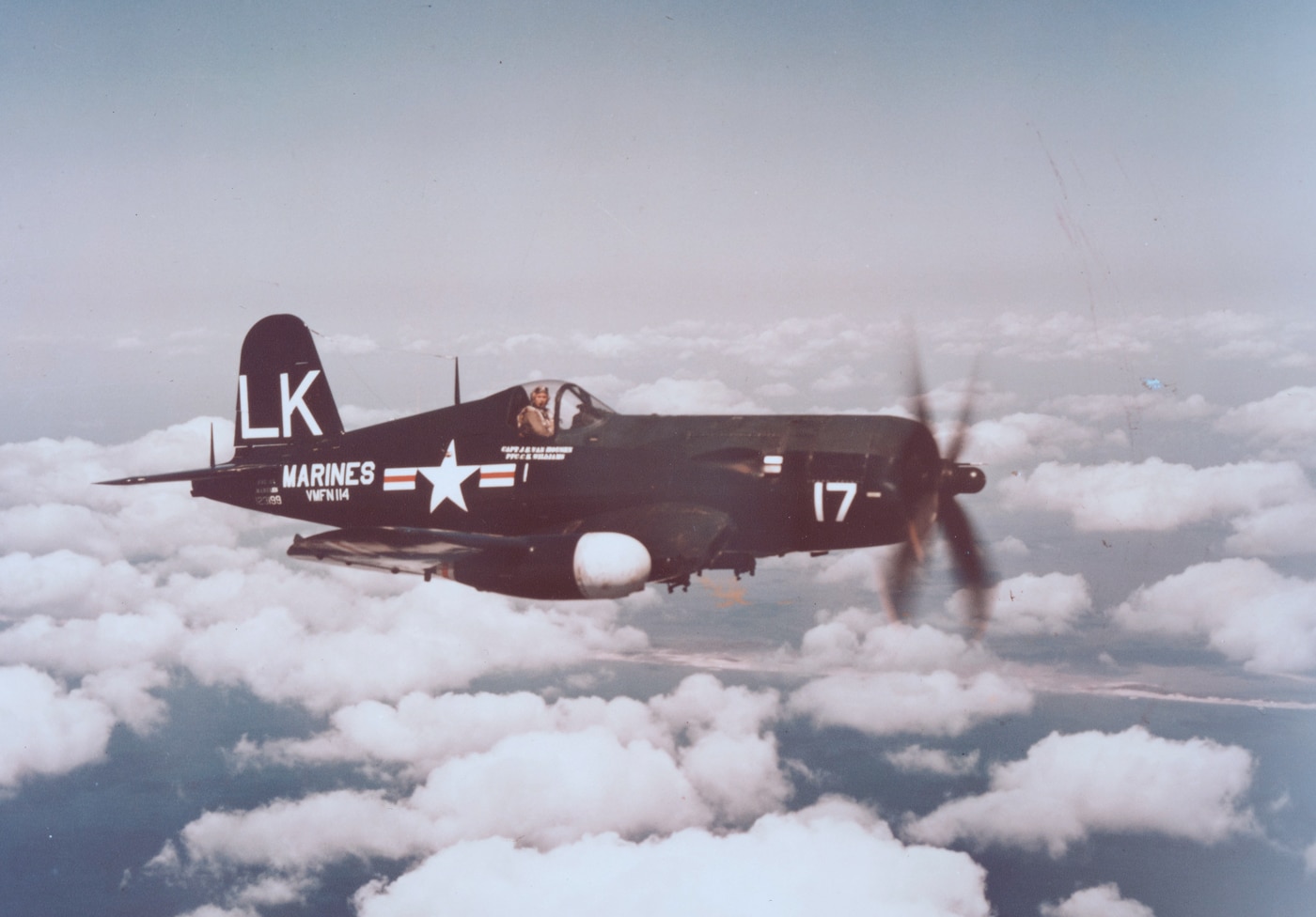
Design work began in 1938, and the first order for the fighter was placed on June 30 of that year. A full-scale plywood mock-up — which proved to be not that different from the actual aircraft — was ready for inspection at Vought-Sikorsky’s Stratford, Connecticut facility in early February 1939.
Engineers had to deal with a number of flaws that weren’t all that uncommon in the era. Once addressed, the result wasn’t exactly an aircraft that was “better late than never.” Rather, the Vought F4U Corsair should be seen from the point of view that great things come to those who wait.
Speedy Aircraft
It was also the first U.S. warplane built around the 1,850-hp (1380-kW) Pratt & Whitney XR-2800-4 Double Wasp radial engine, the same heavyweight that powered the U.S. Army’s P-47 Thunderbolt. Notably, the Vought fighter was equipped with a propeller that was 13-foot, 4-inch (4.13-meter) diameter, wider than that of the Thunderbolt, but with three blades instead of the P-47’s four blades.
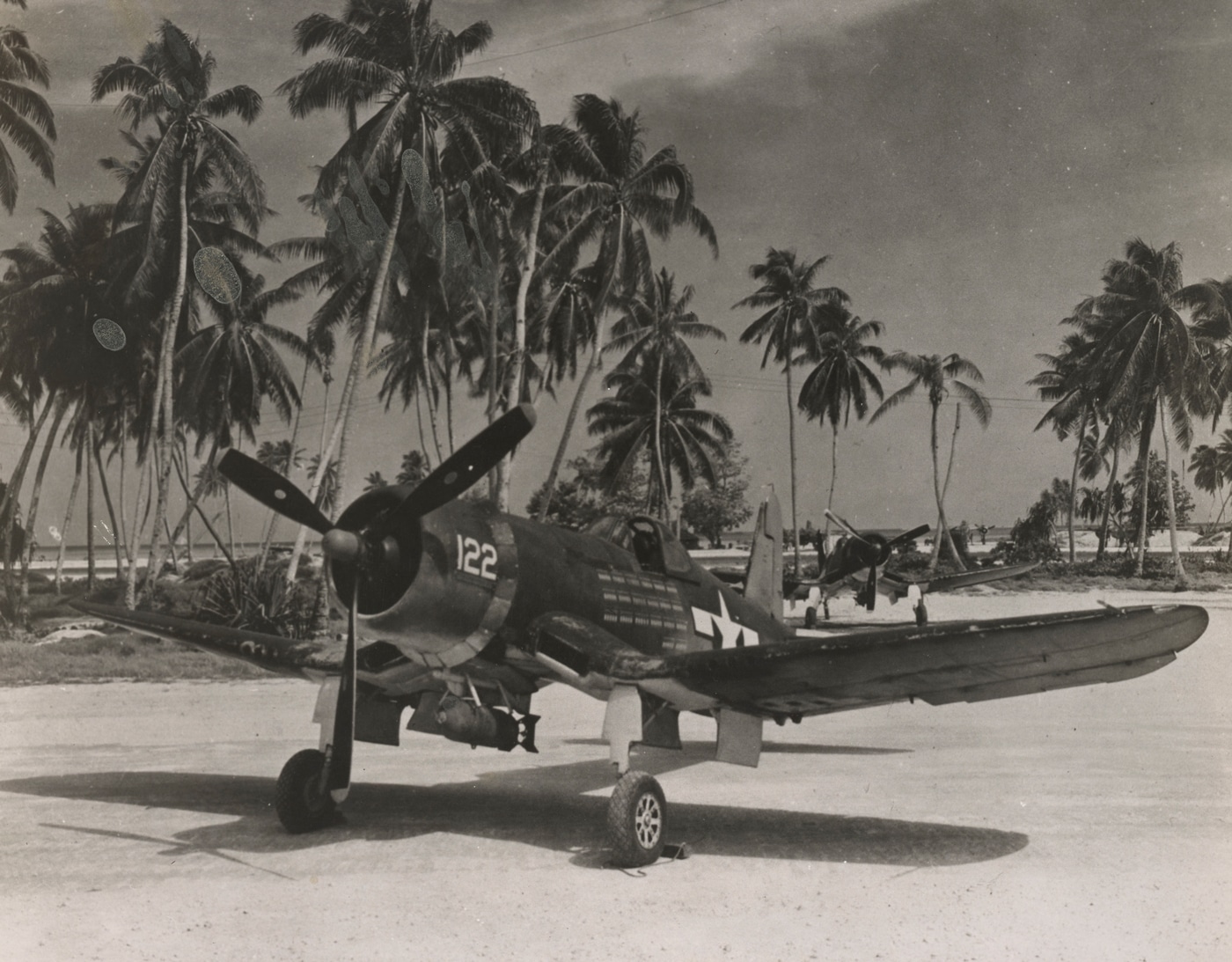
It was innovative, but it required some careful design considerations.
Aviation pioneer Rex Beisel, the chief engineer on the program, sought to find a way to provide the necessary ground clearance without making the landing gear too lengthy or too heavy. Beisel’s solution was what led to the inverted gull wing, which had the benefit of reducing drag at the juncture of the wing and body. This radical design also resulted in the first U.S. warplane that was able to exceed 400 mph.
Corsair Enters Service
As the military analyst report Jane’s Fighting Aircraft of World War II (originally published by Jane’s Publishing Company 1946/47) noted, only a single Prototype XF4U-1 was delivered to the U.S. Navy in 1940 — a risky decision that proved disastrous after it crashed and subsequently led to prolonged development.
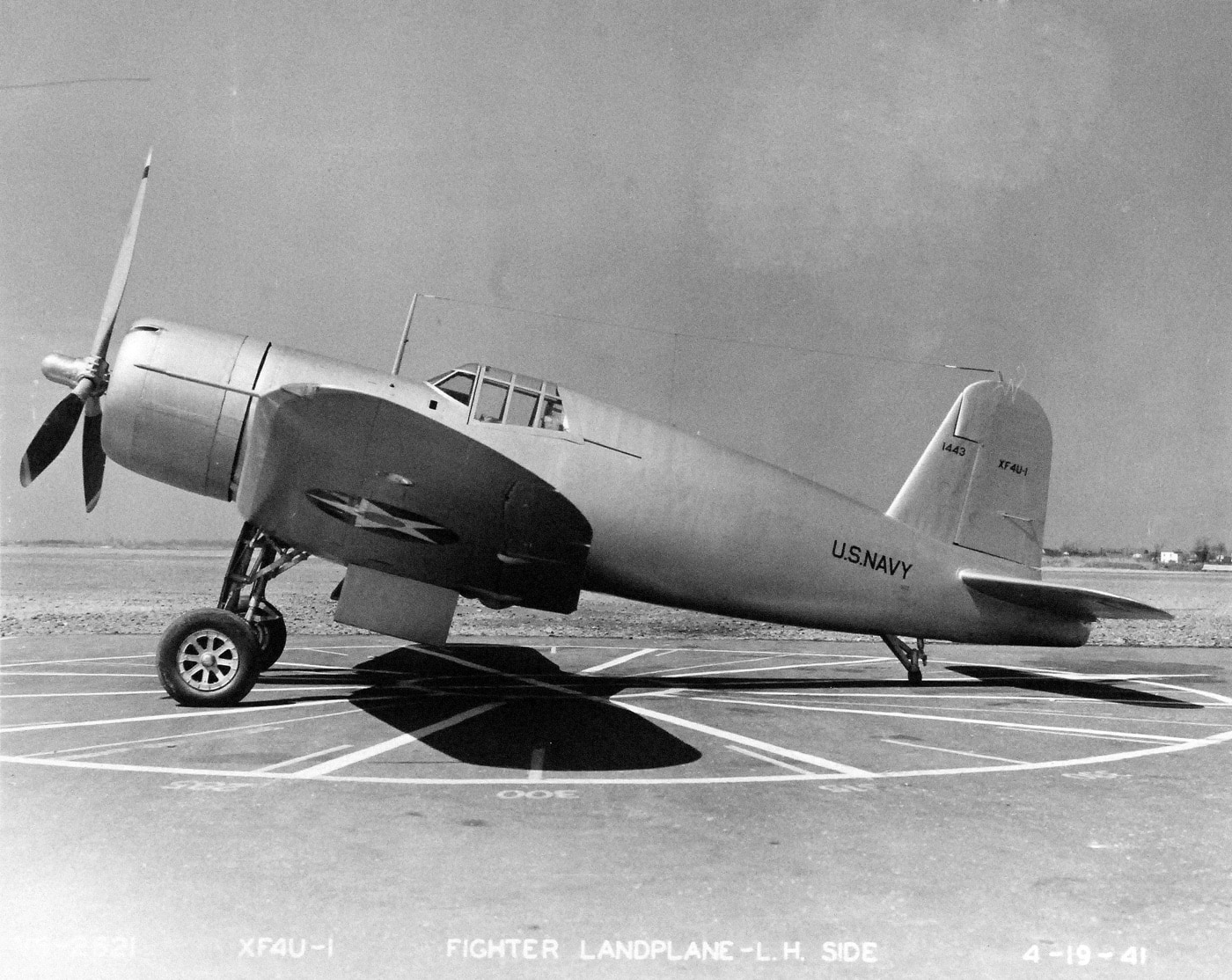
After protracted tests, the aircraft was first ordered in quantity in the fall of 1941. The first production F4U-1 flew in June of 1942, while delivery to the U.S. Navy occurred on July 31, 1942, just a day after the first flight of the rival Hellcat.
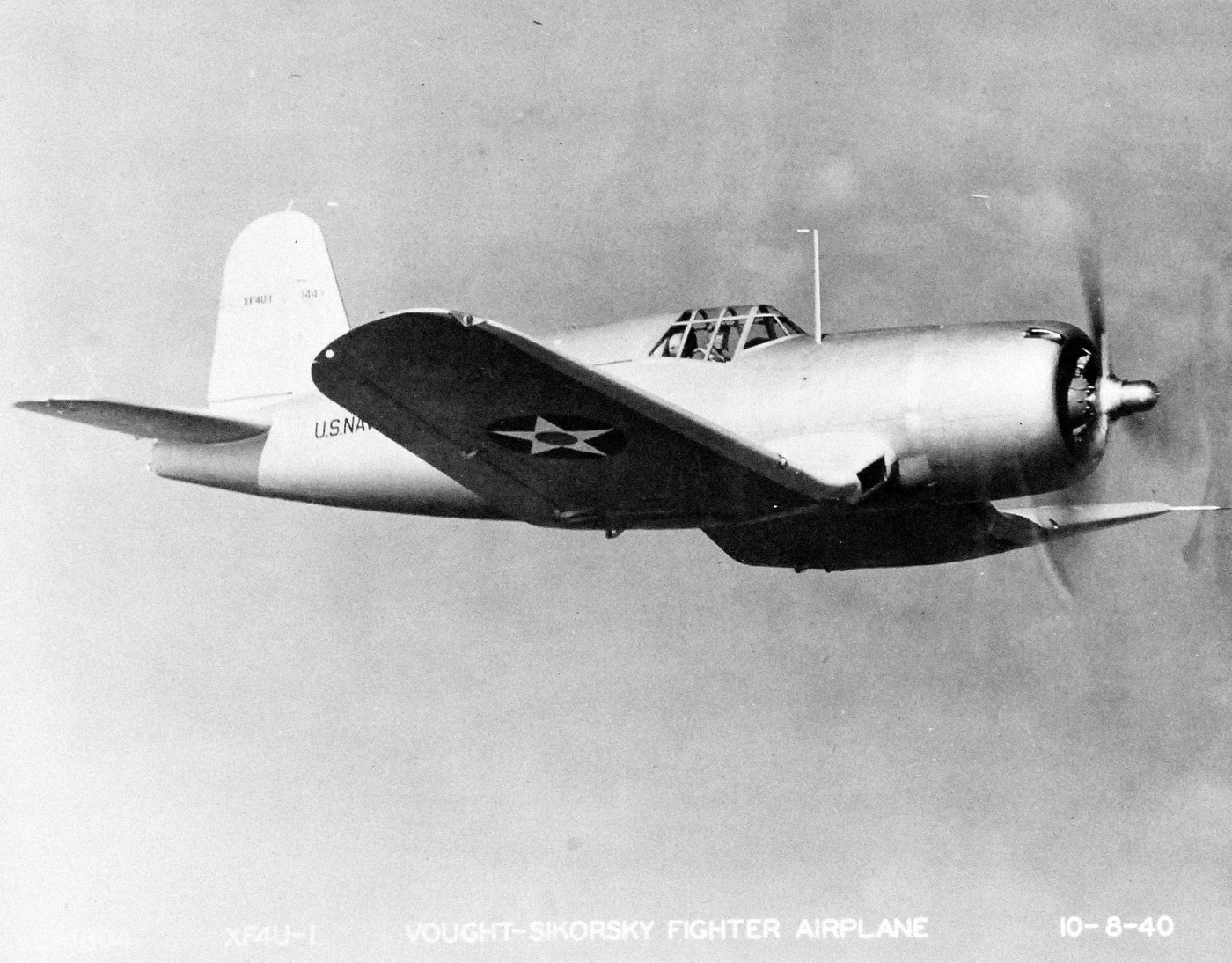
The F4U was put into production by Chance Vought, while Brewster Aeronautical Corporation and the Goodyear Aircraft Corporation also manufactured the fighter during the Second World War. In total, more than 10,000 were produced by the end of the conflict. With interest from foreign buyers, the Corsair remained in production for nearly a full decade for a total of 12,571 — making it the longest production run in terms of time than any U.S. fighter prior to the F4 Phantom II.
A True Warbird
The F4U Corsair was first employed in combat operations in Guadalcanal in February 1943 — which was still early enough for pilots as well as maintenance crews to experience some of the most grueling conditions of the war in the Pacific. It also proved more than up to the task.
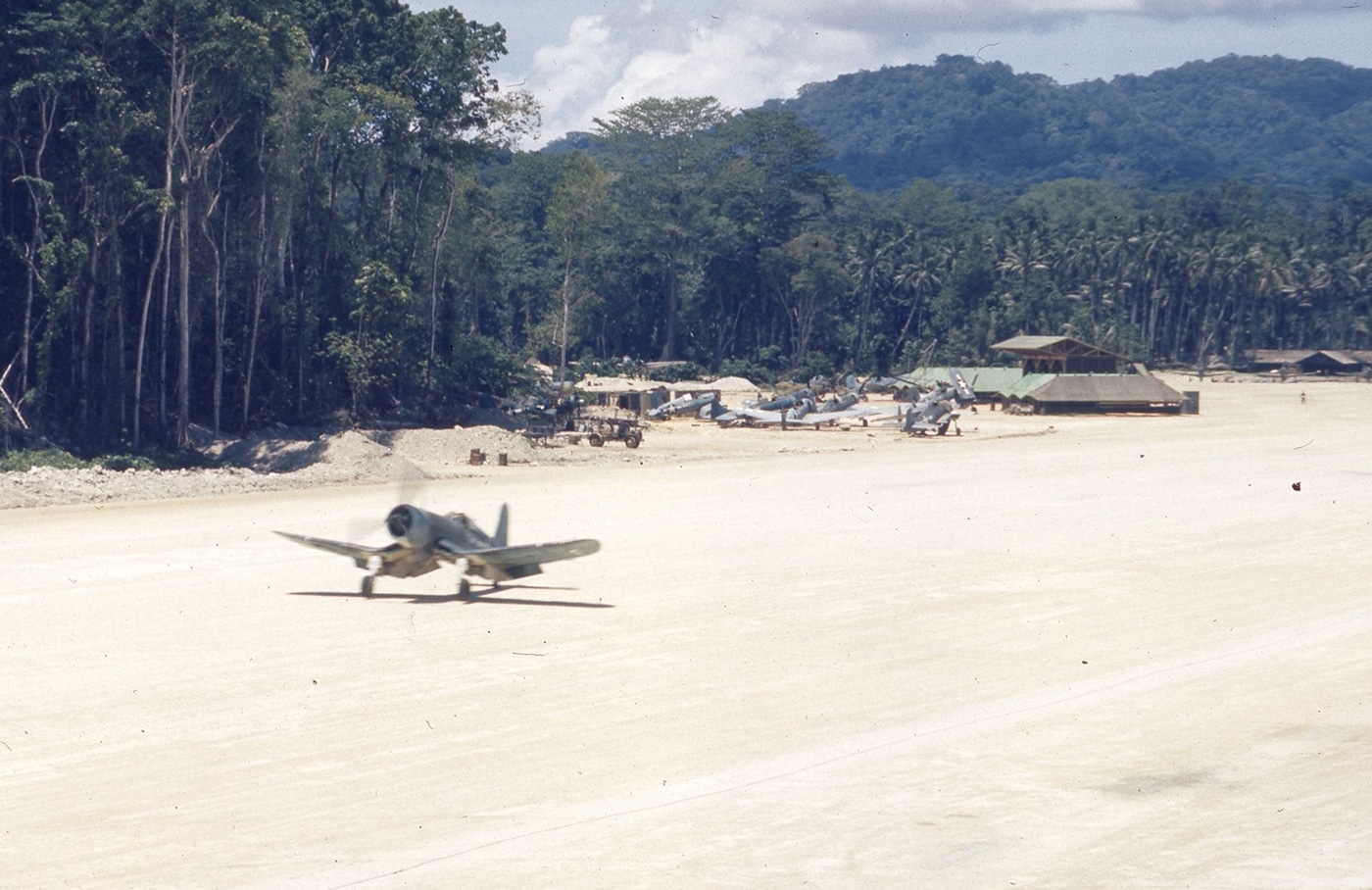
Upon entering service, the F4U immediately took command of the sky and proved to shift the advantage significantly. Though Japanese fighters had previously faced serious challenges when outnumbered by American aircraft, the Corsair gave the U.S. pilots a major advantage as they had an aircraft that was faster and had far greater killing potential.
Originally fitted with two fuselage and two wing guns, it was subsequently equipped with six .50 caliber Browning machine guns in the folding outer wings, with 390 rounds of ammunition each (2,340 rounds total). It was further equipped with 155 lbs. of armor, as well as self-sealing fuel tanks. The pilot sat high in the aircraft, strapped to a narrow metal seat that was equipped with a life raft and emergency supplies.
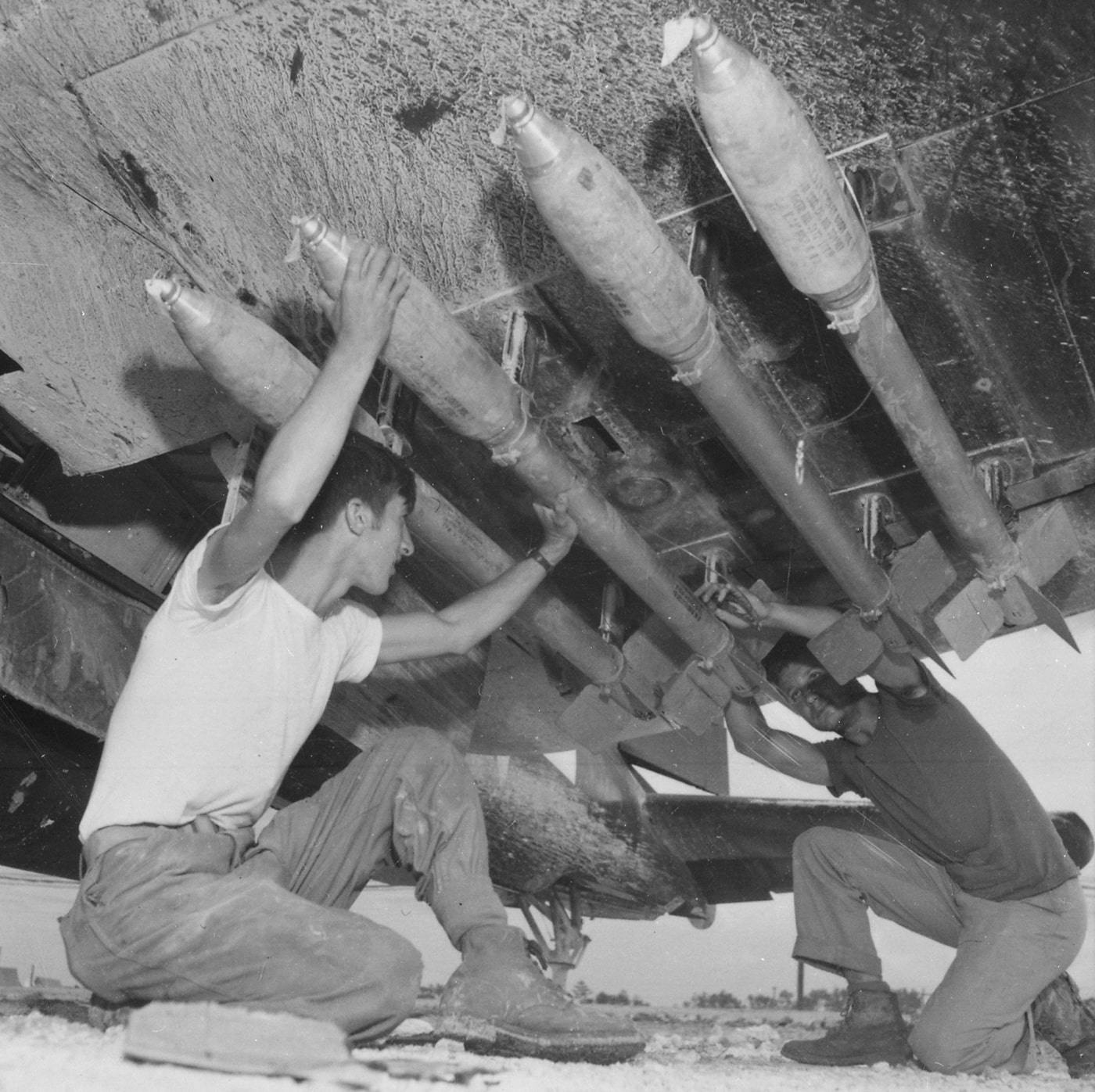
Up until the end of 1944, the Corsair was used exclusively by the U.S. Navy and Marine Corps as a land-based fighter in the Pacific. It reportedly performed superbly in the Battle of the Solomon Islands, the invasions of the Gilbert and Ellice, and the Marshall Islands, and later the Battle of Peleliu and Battle of Iwo Jima. The F4U earned the flattering nickname the “Whistling Death” by the Japanese for the unique sound it made while diving.
From testing to combat, the F4U repeatedly proved itself to be more than a match to the Japanese Mitsubishi A6M “Zero” fighter, even though the Corsair was heavier — and a bit more difficult to handle. However, it was as maneuverable as the Zero and had better speed, range and staying power.
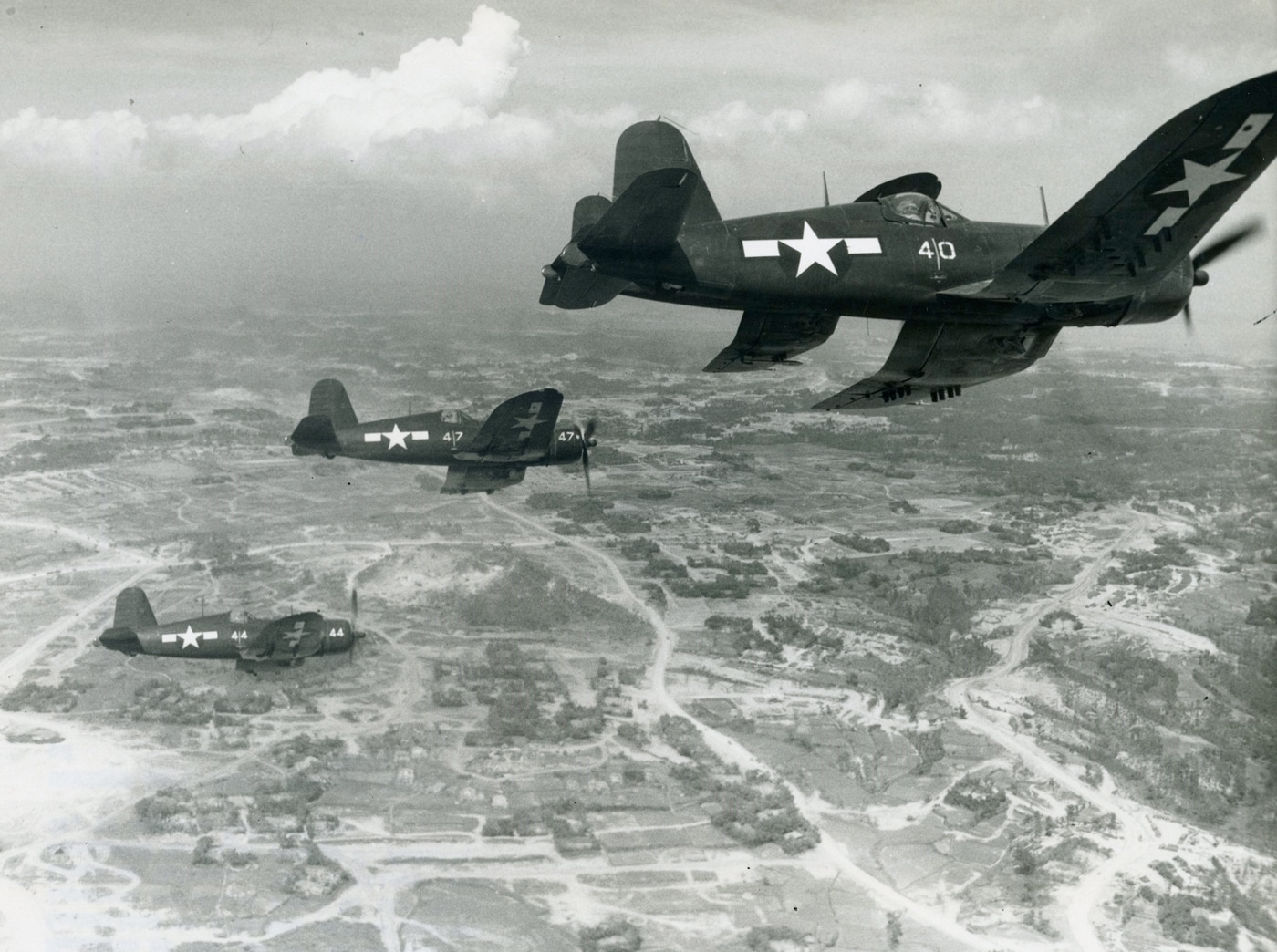
The all-aluminum fuselage and inverted gull wings were strong and the aircraft could be put through some serious stress tests in flight. About the biggest issue was visibility due to the long nose of the aircraft — and that was to remain a problem through much of the F4U’s service history. As a result, while the aircraft had been successfully tested to operate from carriers, the U.S. Navy found the F6F Hellcat better suited to carrier operations. That was less of an issue for the U.S. Marine Corps, which usually flew from land bases in the Pacific.
The Corsair was upgraded during the war, and among the variants was the F4U-1D, which was the first model to be deployed aboard carriers in large numbers beginning in early 1945. In addition, the F4U-2 was developed through the conversion of 34 F4U-1s, with the addition of an AIA radar antenna in a radome on the leading edge of the starboard wing, but at the expense of one of its guns. VF(N)-75 became the first Corsair night fighter operator, flying its first Pacific mission in October 1943, while it acknowledged its first confirmed kill the following month. A second Navy squadron, VF(N)-101, was also equipped with the aircraft in night fighter configuration, while the Marine Corps VMF(N)-532, commanded by Major E.H. Vaughn, also operated the fighter. Vaughn employed the F4U-2 to conduct night strafing attacks on the Japanese.
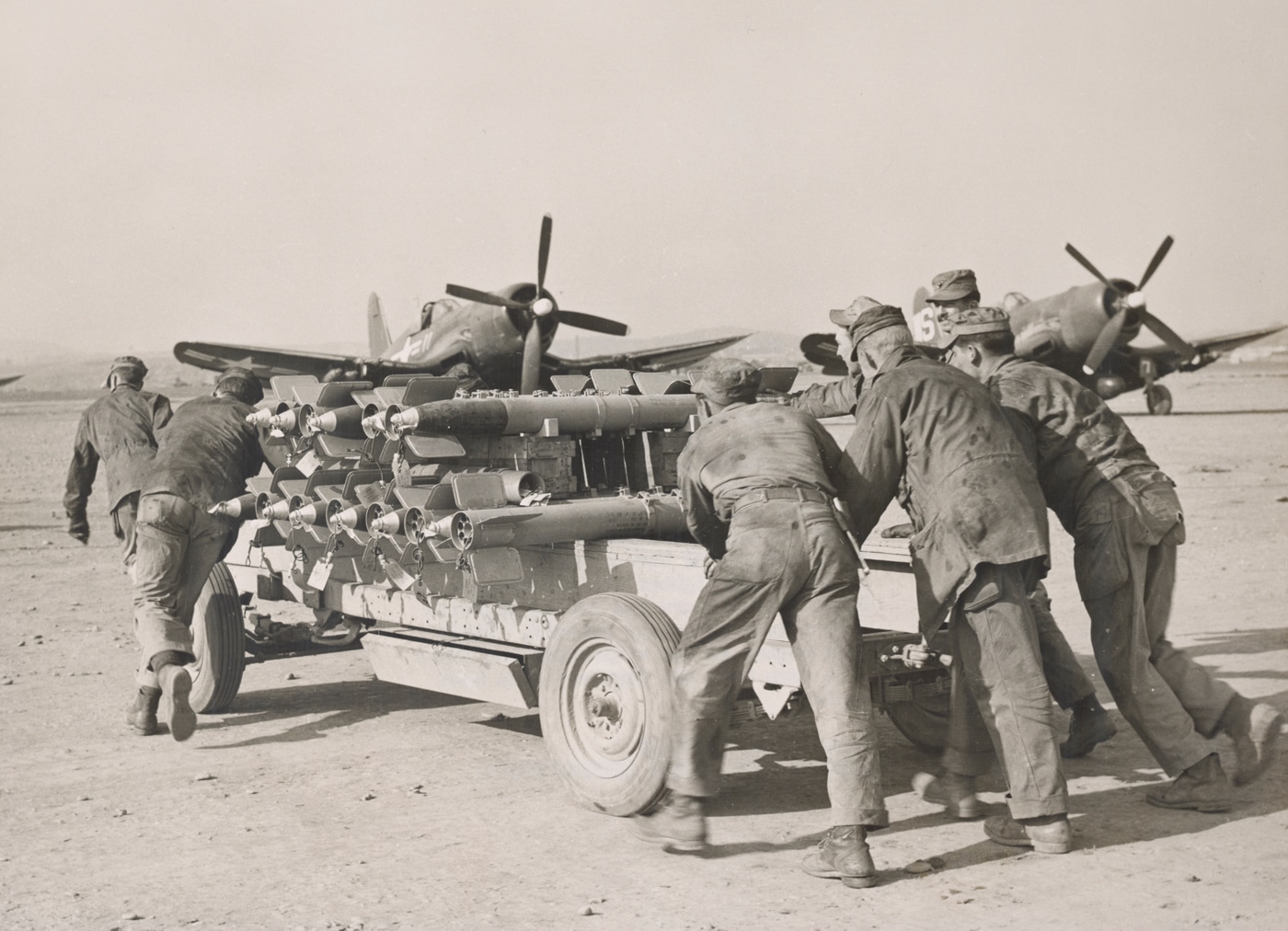
By the end of the Second World War, Corsair pilots flew 64,501 combat sorties, including 54,470 from land and 9,481 from carriers. The inverted-gull-wing fighters successfully destroyed 2,140 Japanese aircraft for a loss of just 189 Corsairs in air-to-air combat — a spectacular 11 to 1 kill ratio. During the Korean War, Capt. Jesse Folmar of USMC VMA-312 became the first pilot to down a MiG-15 jet while flying a propeller-driven aircraft!
Foreign Service
Although the Corsair is typically associated with the Pacific Theater where it was used extensively by the U.S. Navy and Marine Corps, the Corsair was considered for use in the European and Mediterranean theaters. However, the U.S. Army Air Force was not anxious to adopt a Navy fighter and delinked the early F4U-1 model. It was operated by the French Navy, the UK’s Royal Navy’s Fleet Air Arm, and the Royal New Zealand Air Force during and after the Second World War. It even served as a fighter-bomber in French service in the colonial conflicts in Indochina and Algeria — and the final Corsair to roll off the assembly line was delivered in 1953 to the French military.
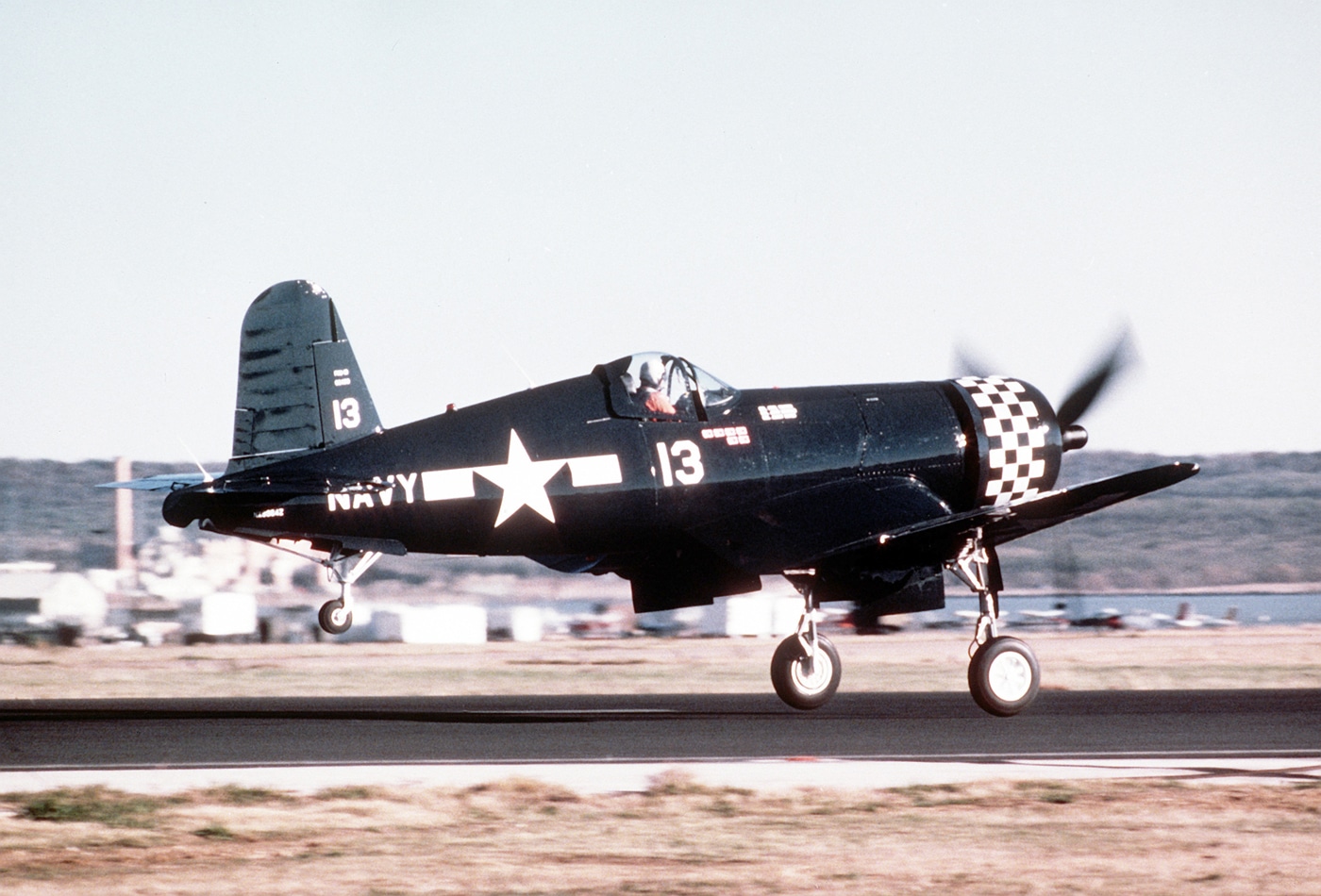
In addition, the U.S. military sold surplus Corsairs to the air forces of Argentina, El Salvador and Honduras. It is believed it was last to be employed in combat during the “Soccer War,” the brief military conflict fought between El Salvador and Honduras in 1969. During that short war, two El Salvadorian Corsairs were shot down, the last also to be lost in combat.
In addition, after it was retired from service with the U.S. military, the Corsair saw use in air races — notably in competitions in Cleveland and later in Reno. The aircraft has been a favorite at air shows. According to the Federal Aviation Administration (FAA), there are 45 privately owned F4Us in the United States as of 2022, while dozens are now on display in museums around the world.
F4U Corsair in Popular Culture
The 2022 film Devotion, about a pair of U.S. Navy fighter pilots during the Korean War, sees them fly the F4U-4 Corsair — and the aircraft is as much a star of the movie as Jonathan Majors and Glen Powell.
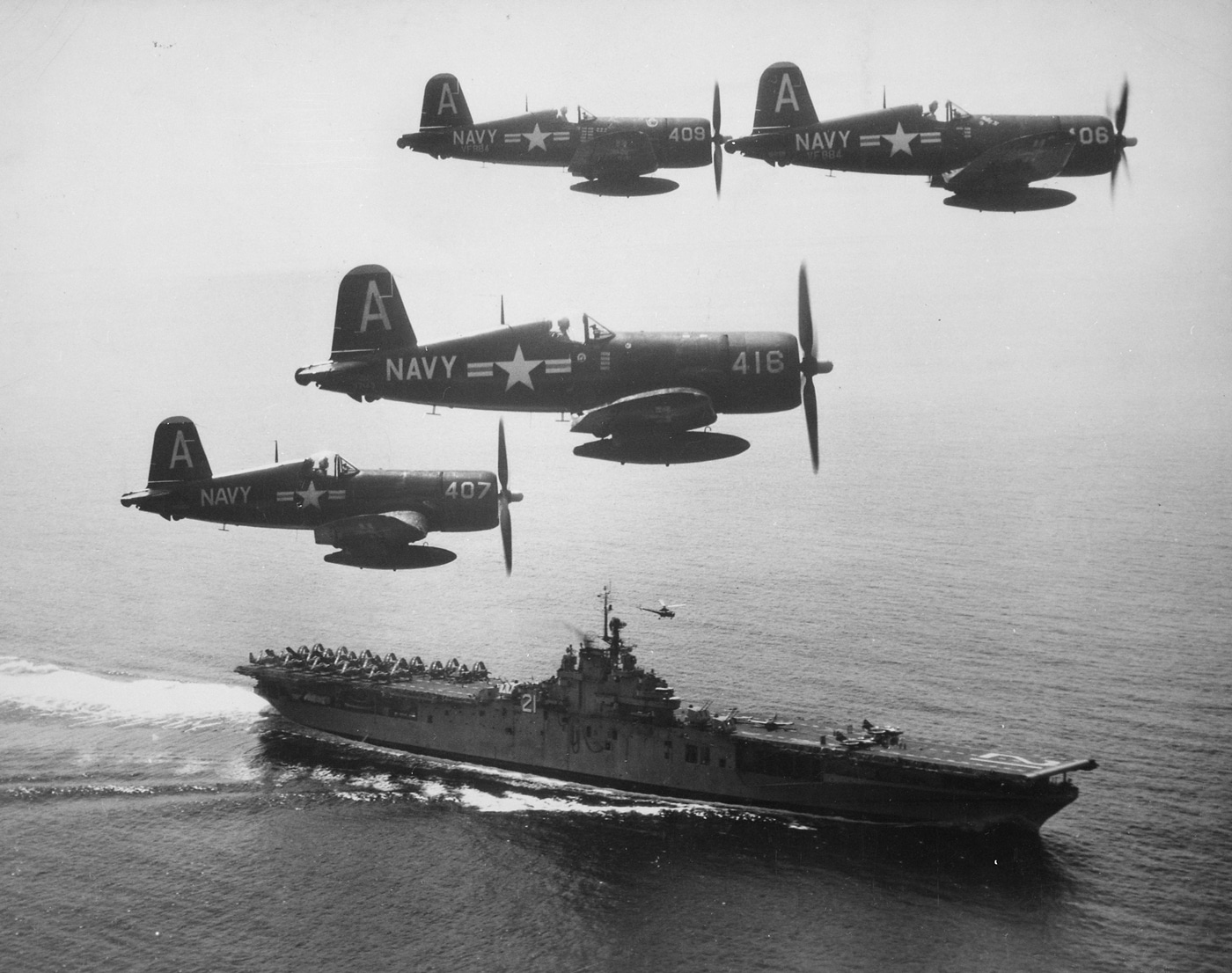
It was just one of a handful of movie appearances of the aircraft, which also appeared in short-lived Black Sheep Squadron TV series that aired on NBC from September 1976 until April 1978. The show featured a heavily fictionalized story of the Marine Fighter Squadron 214 “The Black Sheep,” which was led by United States Marine Corps aviator Greg “Pappy” Boyington. Boyington flew with the Flying Tigers in the P-40 Warhawk prior to the United States entering World War II.
The movie and TV show help ensure that the legacy of the F4U Corsair is remembered and respected as it was the aircraft that helped secure victory in the Pacific.
Editor’s Note: Please be sure to check out The Armory Life Forum, where you can comment about our daily articles, as well as just talk guns and gear. Click the “Go To Forum Thread” link below to jump in and discuss this article and much more!
